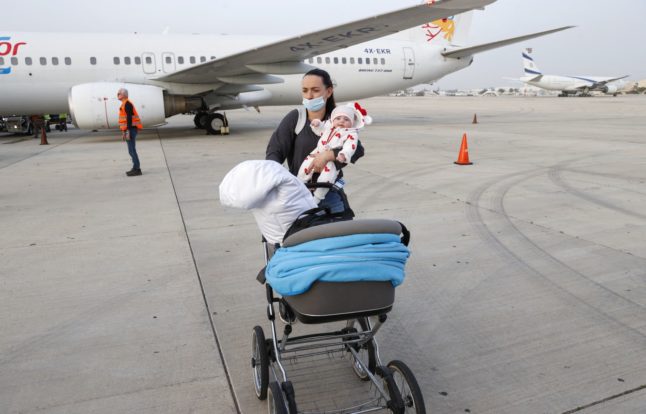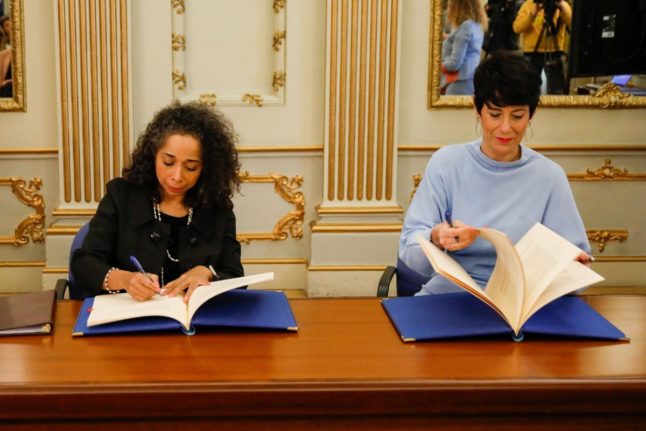You’ve left the United States and moved to Spain. Now, you’ve added a baby to this fabulous new life. You’ll want to secure their U.S. citizenship and passport straight away.
If one parent is Spanish, your child is entitled to Spanish citizenship. If your child doesn’t qualify for citizenship by birth, they’ll need an American passport to declare their nationality before being registered in Spain.
This article lays out the qualifications for a U.S. passport and the steps to get one. Fortunately, the process is fairly simple, according to people who have done it.
Does your baby qualify for a U.S. passport?
Your newborn qualifies for U.S. citizenship and a U.S. passport under the following conditions.
– They were born within wedlock to two U.S. citizen parents.
– They were born within wedlock and one of the parents is a U.S. citizen, and lived at least five years in the Unites States, two of which were ager after 14 or
– They were born out of wedlock to a U.S. citizen mother and non-citizen father.
– They were born out of wedlock to a U.S. citizen father and non-citizen mother.
When the parent who is a U.S. citizen is the father and the baby is born out of wedlock, there are a few additional steps required.
You’ll need to prove the blood relationship between your child and their father, attain a sworn statement from the father agreeing to give financial support until they are 18 years old and supply a written statement acknowledging paternity.
If your child does qualify for American citizenship, the next steps are pretty straightforward, although completing the required forms can be time-consuming.
What are the first steps when applying for a child’s U.S. passport from Spain?
The first step is applying for a Consular Report of Birth abroad (CRBA), which documents that your child is a U.S. citizen at birth. Any of the U.S. Consular Agencies in Spain can accept applications for Consular Reports of Birth Abroad (CRBA) and U.S. passports.
To begin, you’ll apply online. But remember, you’ll need original copies of any documents you upload; you’ll bring these to your in-person appointment at the consulate.
Documents you’ll need include:
· Your child’s Spanish birth certificate.
· Your marriage certificate, if married.
· Divorce certificate, if divorced.
· Evidence of U.S. parent’s citizenship, valid identification, and proof of physical presence in the United States.
· Valid identification for non-U.S. citizen parent
“You will need proof of having been a long-term US resident in the past so think about what you can show (school transcripts, tax returns, etc.)” says Liz who moved from Scottsville Arizona to Málaga. Many Americans said this was the most time-intensive part.
Once you’ve completed and submitted your CRBA, you’re ready to make an appointment at a U.S. Consulate. The best way to make the appointment is by contacting the consulate directly, but make sure to wait for three days after submitting and paying for your CRBA. The fee is $100.00.
Remember, you must bring the original versions of every document you uploaded for your CRBA application, and your child must be present. Generally, both parents must also be present.
You can apply for your child’s passport at the same appointment. Be sure to complete the U.S. passport application prior to your appointment (including payment of a $135 fee) and bring the originals of all documents you uploaded for your passport application. Both parents must sign the application.
You’ll need to bring original copies and photocopies of the following documents:
· One 2”x2” (5x5cm) passport picture for your child.
· A document listing the legal guardians of your child.
· Identification for both parents.
· A physical copy of the completed passport application form (DS-11).
Important considerations:
For the CRBA, the U.S. parent(s) must report their physical presence in the United States, detailing each trip abroad. In other words, it’s crucial you don’t include time abroad in your list of days staying within the United States. If the dates are incorrect, the processing could be suspended until you correct the dates.
“The hardest part for us was to list every country we had ever visited, when and why. Other than that, pretty easy. We did through the consulate in Valencia. Good luck,” says Sara, who moved from Boston, Massachusetts to Valencia.
It’s very important for both listed parents to attend the appointment. If only one parent can attend, you’ll need to submit a Statement of Consent. If you have sole legal custody of your child, you’ll need to bring proof, such as a court order.
Bring your child’s passport photo in a separate envelope (to not use it) but don’t staple it to the passport application.
How long does it take?
Generally, it takes approximately eight weeks to receive your child’s passport, which will be mailed to you. Be prepared to receive multiple mailings; your passport and citizenship papers will come separately. If you’ve requested both a passport book and a passport card, you’ll get 3 different mailings. If you’d like, you can pay for faster shipping.
If you have questions, don’t be shy about contacting your consulate. “It’s a simple process. Visit the US embassy website for any information you need. You can call or email any questions you have,” says Sarah, who moved from San Francisco to Barcelona.
Congratulations on your multinational family!



 Please whitelist us to continue reading.
Please whitelist us to continue reading.
Member comments